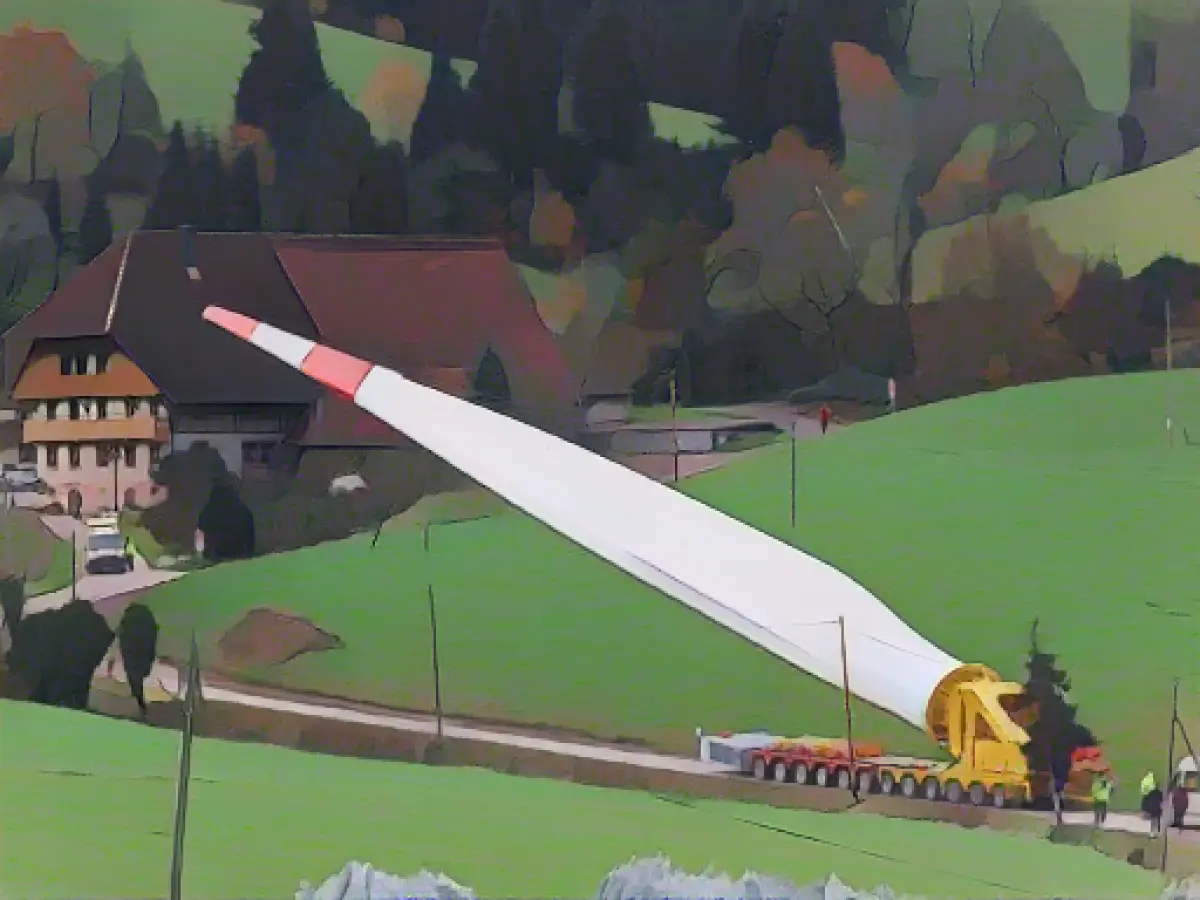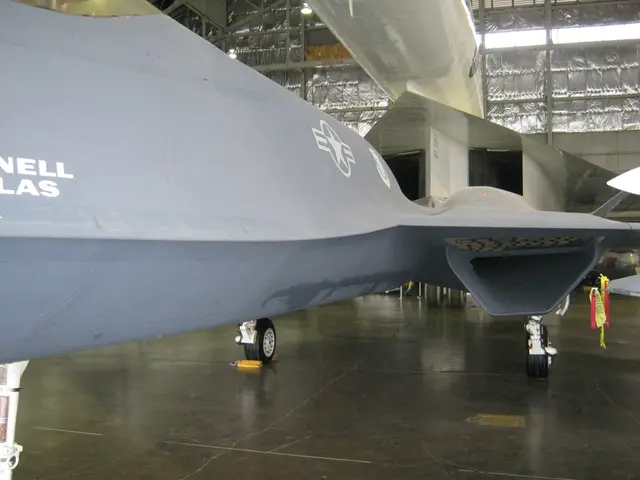Wind Blade Transport Causes Commotion in Biberach
The delivery of a massive wind turbine blade sparked a commotion in the Black Forest community of Biberach last week. Barricaded roads and overturned power lines halted life in this quaint town for hours. The Mayor, Jonas Breig (CDU), acknowledged the unique event, saying, "We've never experienced anything like this before."
The 68-meter-long behemoth was transported via a specialized vehicle, known as a self-propelled vehicle, at a leisurely pace through Prinzbach, the Ortenau district. "This is something truly extraordinary," said Sebastian Schüßler, Wind Energy Project Manager at Badenova Wärmeplus. The growing size and power of wind turbines necessitate venturing higher, as the wind resources in Baden-Württemberg don't compare to those in Schleswig-Hostein behind the dyke.
Badenova Wärmeplus is constructing a towering wind turbine that stands approximately 230 meters tall on Kallenwald, neighbouring Seelbach. Scheduled for operation early next year, this turbine will produce a staggering 9 million kWh of electricity annually—enough to meet the needs of around 6,000 individuals.
Schüßler expressed delight at the new addition, remarking, "Baden-Württemberg has a growing reputation in wind energy." While certain groups express concern and reservations about wind power, he emphasized the general acceptance of this green energy source.
As of the end of September, 770 wind turbines were operational in Baden-Württemberg, according to the Ministry of the Environment. In response to the slow growth of wind energy, the "green-black" state government established a task force in 2021.
Despite the transportation challenges, large wind turbine blades play a crucial role in reducing our dependence on non-renewable energy sources and paving the way for a more sustainable future.
Background Information
Transporting huge wind turbine blades requires thoughtful planning to avoid disruptions. Blades often exceed road capacity constraints, necessitating specialized transport trucks and occasional use of railway services. This sizeable energy source has both positive and negative impacts on nearby communities, contributing to the expansion of renewable energy in regions like Baden-Württemberg.
Economic benefits arise from the installation of new wind farms, which create jobs and contribute to municipal budgets, as seen in Lower Saxony. Additionally, innovative cargo planes like the WindRunner aim to transport blades over 100 meters in length to remote locations with abundant wind resources, thus facilitating the carrying of low-energy electricity to distant locations.
Although transporting large turbine blades can result in logistical challenges, such as traffic congestion and closure of roads, the positive effects on energy independence and grid stability far outweigh these drawbacks. Wind energy projects like He Dreiht, which is projected to produce enough electricity for 1.1 million homes, demonstrate the economic viability of investing in renewable energy and its potential to compete with conventional energy sources.








